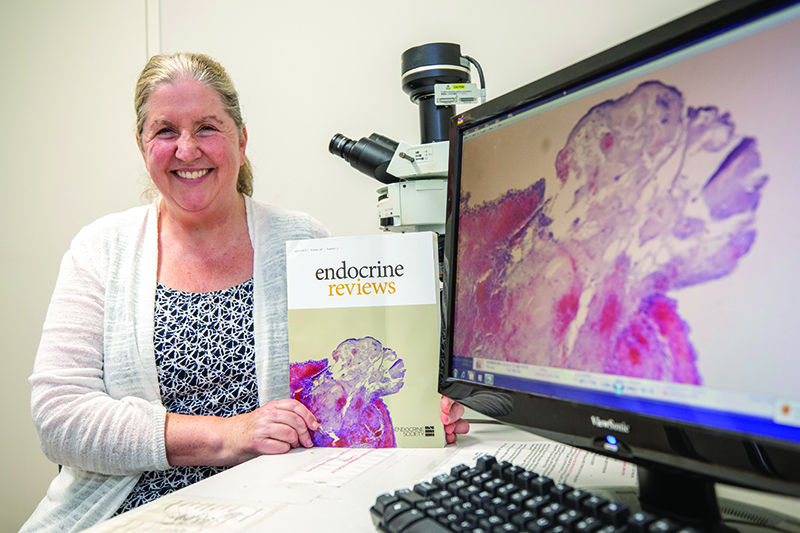Contraceptive research is chosen among best of 2020

A potential new approach to contraception is winning worldwide acclaim for an EVMS scientist.
Diane Duffy, PhD, Professor of Physiological Sciences, led the research behind the paper “Neurotensin stimulates the sperm acrosome reaction and reduces percentages of fertilization in vitro,” that was published in the journal Fertility and Sterility Science. (She is pictured above when another research paper was featured on a journal cover.)
Her research was recently selected as one of the 12 best papers published in 2020 in the Fertility and Sterility family of journals. The journals provide an international forum for physicians and scientists who treat and investigate problems of infertility and human reproductive disorders.
“We did this study with the goal of identifying a possible new contraceptive,” Dr. Duffy explains.
The target for her research is the acrosome, a structure on the sperm that is necessary for fertilization.
“For a sperm to fertilize an or egg, the sperm must release the contents of its acrosome very near to the egg,” says Dr. Duffy. “Our idea for a new contraceptive was to get the sperm to release its acrosome contents too early – away from the egg – so that the sperm could no longer participate in fertilization.”
To do this, Dr. Duffy and her team used a peptide known as neurotensin to stimulate the acrosome to release its contents. Her research shows that sperm treated with neurotensin are no longer able to fertilize an egg in a laboratory setting.
“Fertilization normally takes place in the woman’s fallopian tube. Neurotensin could be deployed as a contraceptive that acts in the vagina or uterus to inactivate sperm before they reach the fallopian tube,” she says.
The research identified a specific neurotensin receptor that is responsible for neurotensin’s action at sperm. “In future studies,” she says, “we hope to target this receptor with a more selective, non-peptide molecule, which would increase the options for contraceptive delivery and potentially reduce side effects.”